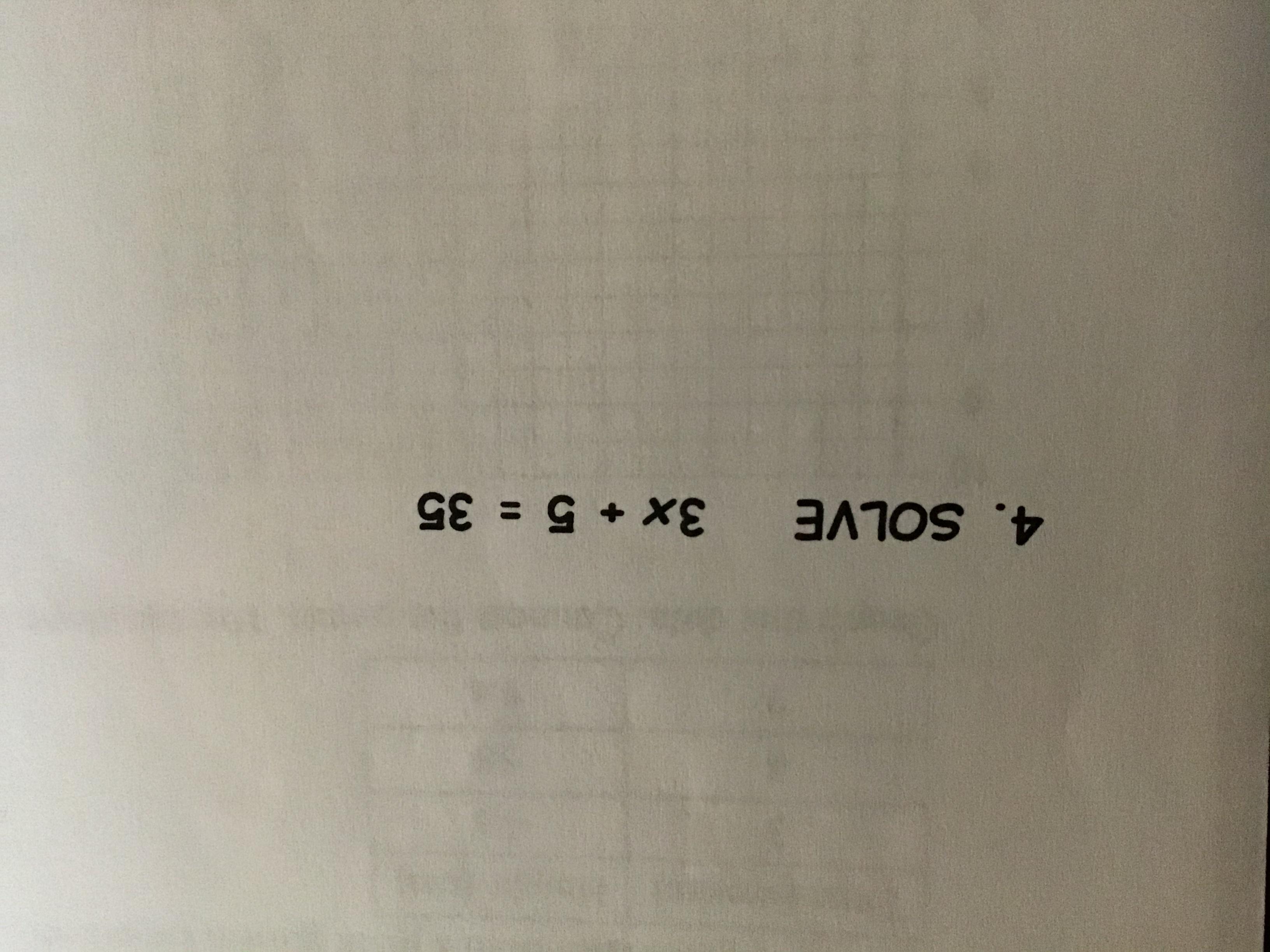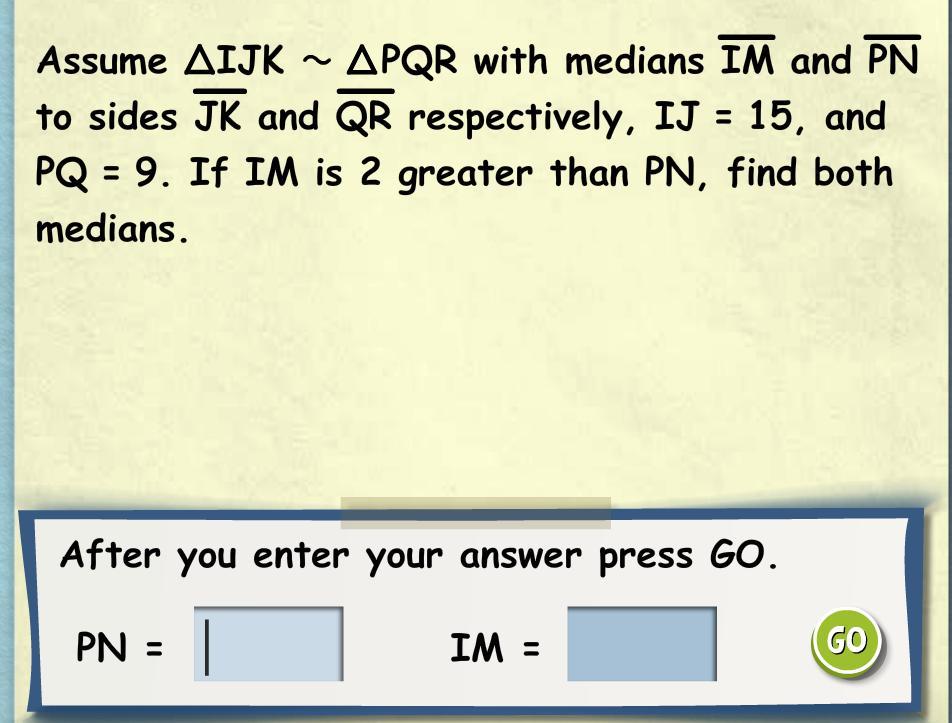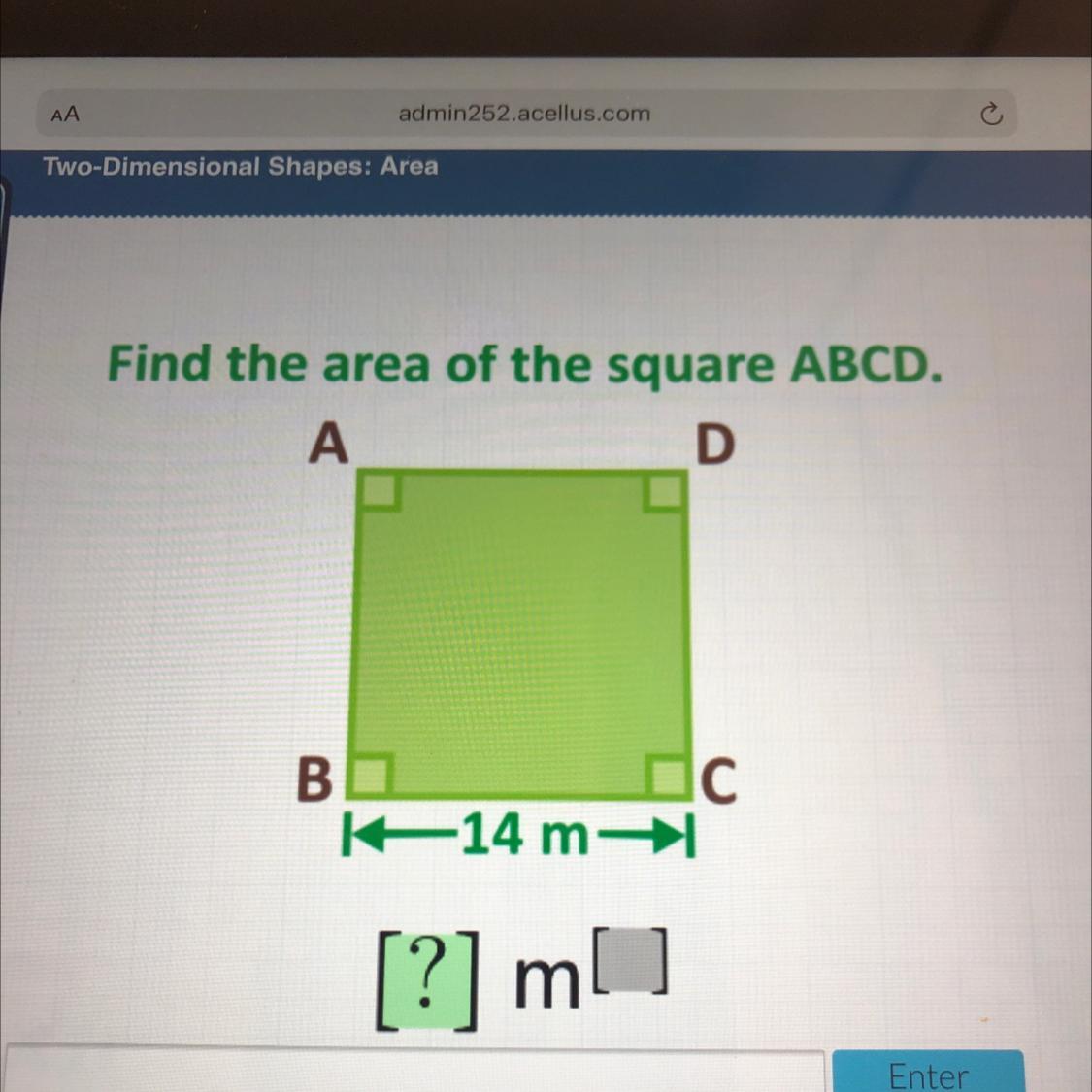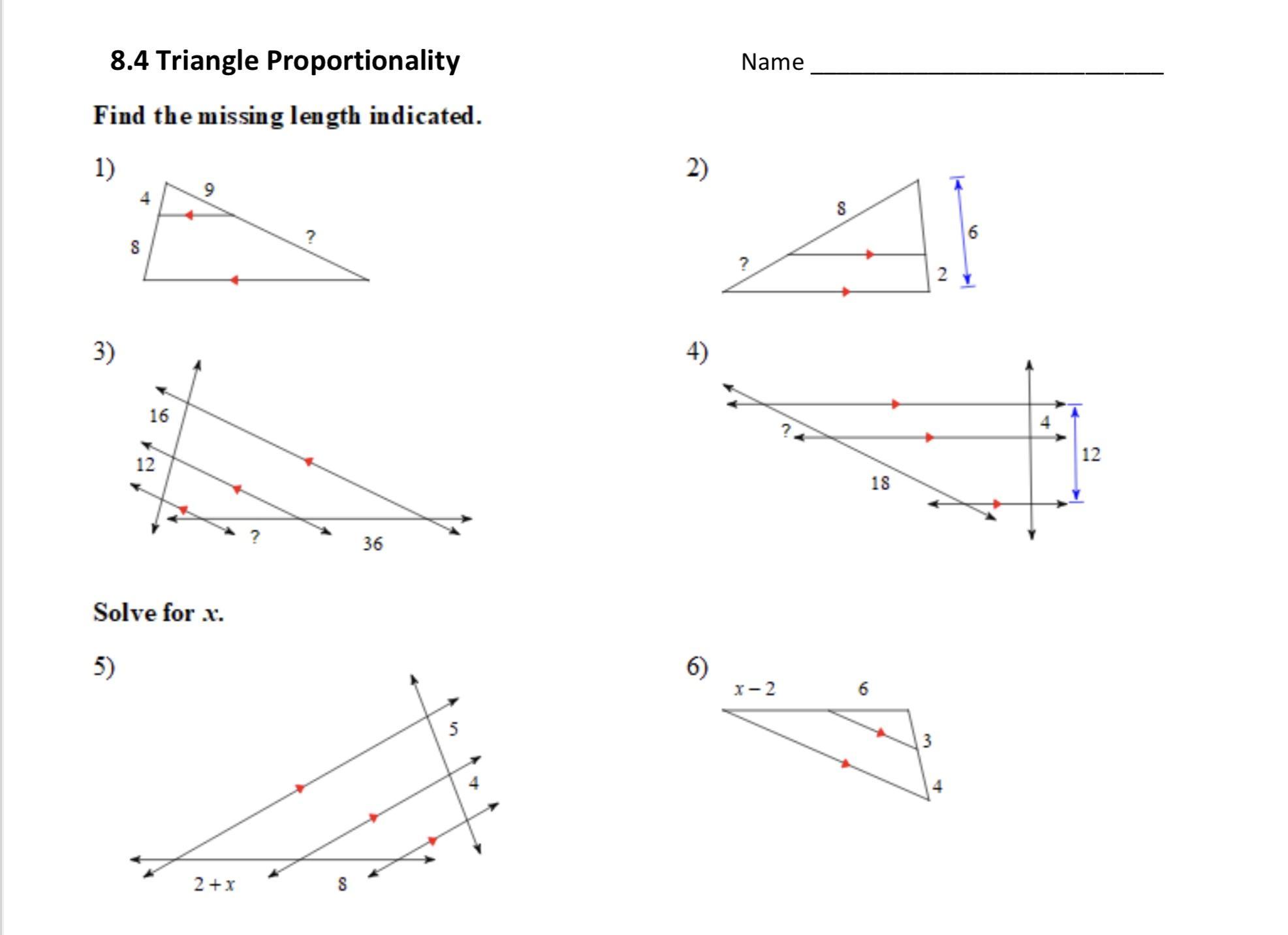Answers
2) 4
3) 27
4) 9
5) x=8
6) x=6
Related Questions
how much mass, to the nearest tenth of a gram, did the candle lose after $3$ hours of burning? if this rate remains constant, estimate how much longer the candle will burn, to the nearest hour, before melting entirely.
Answers
The candle will burn for approximately 197 more hours before melting entirely.
To calculate the mass lost by the candle after 3 hours of burning, we need to know the rate at which the candle burns. Let's assume the rate is given in grams per hour.
Once we have the rate, we can multiply it by the number of hours to find the mass lost. Let's say the rate is 0.5 grams per hour.
Mass lost after 3 hours = Rate × Time = 0.5 grams/hour × 3 hours = 1.5 grams.
Therefore, the candle lost 1.5 grams of mass after 3 hours of burning.
To estimate how much longer the candle will burn before melting entirely, we need to know the initial mass of the candle and the total mass it can lose before melting. Let's assume the initial mass is 100 grams and the maximum mass loss before melting is 80 grams.
Remaining mass = Initial mass - Mass lost = 100 grams - 1.5 grams = 98.5 grams.
Now, we can estimate the remaining burning time by dividing the remaining mass by the burning rate:
Remaining burning time = Remaining mass / Rate = 98.5 grams / 0.5 grams/hour = 197 hours.
Know more about Mass here:
https://brainly.com/question/11954533
#SPJ11
Solve this for me anyone?

Answers
Answer:
52 degrees
Step-by-step explanation:
Really easy, i learned it this summer
1. 180-128=52
2. 3=52 cus alternate interior angles
if data from a factorial design are plotted on a line graph, which set of lines should always demonstrate that there is no interaction between the independent variables?
Answers
The lines would be parallel to demonstrate that there is no interaction between the independent variables.
Here, it has been mentioned that data from a factorial design is plotted on the graph. We already know that the results of factorial experiments with two independent variables, x and y, can be represented on the graph where one independent variable is represented on the x-axis and the other is represented by using different colored lines. The y-axis is reserved for the dependent variables.
From the question, we know that there has been no interaction between the independent variables. An interaction means that one variable depended on the other. since that is not happening, It means the lines won't touch each other.
Learn to know more about Linear systems on
https://brainly.com/question/27664510?referrer=searchResults
#SPJ4
What is the time difference between usa and england?
Answers
Answer:
-5 hours
Step-by-step explanation:
Suppose you borrowed $45,000 at a rate of 8.5% and must repay it in 5 equal installments at the end of each of the next 5 years. By how much would you reduce the amount you owe in the first year? Select the correct answer. a. $7,594.46 b. $7,600.46 c. $7,618.46 d. $7,612.46 e. $7,606.46
Answers
The correct answer is option a. $7,594.46.
To calculate the amount you would reduce the amount you owe in the first year, we can use the formula for the equal installment of a loan. The formula is:
Installment = Principal / Number of Installments + (Principal - Total Repaid) * Interest Rate
In this case, the principal is $45,000, the number of installments is 5, and the interest rate is 8.5%.
Let's calculate the amount you would reduce the amount you owe in the first year:
Installment = $45,000 / 5 + ($45,000 - $0) * 0.085Installment = $9,000 + $3,825
Installment = $12,825
Therefore, you would reduce the amount you owe by $12,825 in the first year.The correct answer is option a. $7,594.46.
Learn more about compound angle here:
https://brainly.com/question/33061695
#SPJ8
1/3 divided by 2/5 help me plss

Answers
Answer:
5/6
Step-by-step explanation:
dividing means you gotta flip it to multiplication.
1 times 5 = 5
3 times 2 = 6
hi anyone can help me do this question?

Answers
Answer:
6+18=24+16=40 Top one 3+3=6+8=14
Step-by-step explanation:
Easy by adding
Name:
15. Find the value of x that makes j | k .
A. 43
B. 39
(3x+6)
1239
C. 35
D. 47
Answers
Answer:
B because c I just did the test and got help on it
I need help with this answer

Answers
Step-by-step Explanation:
3x + 5 = 35
You have to get x by itself, so
You get rid of the 5 by subtracting it, then you have to do the same to both sides,
So, 3x = 30
Because, 35 - 5 = 30.
Now you have to Find x,
So you do 3x/3 = 30/3
Because again, do the same thing to the other side.
So now you have x = 10. This will be your final answer.
Anyone know how to solve I have been stuck on this problem for a while

Answers
The medians of the triangles are PN = 3 and IM = 5
How to determine the mediansFrom the question, we have the following parameters that can be used in our computation:
The triangles are similar
Also, we have
PQ = 9 and IJ = 15
IM = PN + 2
Using the above as a guide, we have the following:
PQ : IJ = PN : IM
This gives
9 : 15 = PN : PN + 2
So, we have
9PN + 18 = 15PN
Evaluate the like terms
6PN = 18
So, we have
PN = 3
Recall that
IM = PN + 2
IM = 3 + 2 = 5
Hence, the lengths are 3 and 5
Read more about triangles at
https://brainly.com/question/14285697
#SPJ1
ou observe Alice's demeanor and other than looking very tired, she seems very coherent. You review the prescriptio below. Are there any red flags with this prescription? (Select all that apply). Select the image below to magrury. To return to the assessment question, select any area OUTSIDE of the mage O No, the prescription is valid and should be filled right away. O Yes, Alice is too old for this prescription and should be prescribed something else. O Yes, the writing on the prescription seems inconsistent making it suspicious. O Yes, the doctor does not live in the same geographical location as Alice. Submit acer Firefox (3)
Answers
The red flags in the prescription are;
Alice is too old for this prescription and should be prescribed something else. The writing on the prescription seems inconsistent making it suspicious. What is a prescription?We know that the term prescription would have to do with the drugs that an individual has been asked to take in a given situation. Usually, when a person is sick, the person would have to go to a doctor to get a prescription.
There may be certain red flags in a prescription and these would have to do with the state of health of the patient that is being given the prescription drugs to taken.
Learn more about prescription:https://brainly.com/question/29704315
#SPJ1

what 9999999999999999999x99999999999999999999
i need help plz
Answers
Answer:
1e+39
Step-by-step explanation:
What condition has no solution?
Answers
A condition that is impossible to satisfy has no solution.
Mathematics can be a powerful tool for solving many problems, but there are some issues that can't be solved.
In particular, any condition that is impossible to satisfy, such as the logical statement ‘this statement is false’, has no solution in mathematics. This is because the statement can’t be proven true or false, and so it can’t be solved.
An unsolvable condition is one that cannot be solved using any combination of logical and mathematical steps.
This means that no matter how much time and effort is put in, a solution to the problem cannot be discovered.
To learn more about solution, click here:
https://brainly.com/question/25785824
#SPJ4
Find the area of the square ABCD.

Answers
196 is your answer. 14*4 is 56. 14*10 is 140. 56+140 is 196.
The small one only counts for the first multiplication step. 4*4, is 16 so carry the one over and add it in by how much it’s worth when doing 4*1, is 4. 4+1 is 5.

If it costs 0. 15 per square inch for the wood then what is the cost for design A and Design B
Answers
To calculate the cost for Design A and Design B, we need to know the size of each design in square inches. Once we have that information, we can multiply the size of each design by the cost per square inch of wood to determine the total cost.
Let's say Design A is 10 inches by 10 inches, which is a total of 100 square inches. To calculate the cost for Design A, we would multiply 100 by 0.15, which gives us a total cost of $15.
Similarly, let's say Design B is 8 inches by 12 inches, which is a total of 96 square inches. To calculate the cost for Design B, we would multiply 96 by 0.15, which gives us a total cost of $14.40.
Therefore, the cost for Design A is $15 and the cost for Design B is $14.40.
In summary, the cost of a wooden design can be calculated by multiplying the size of the design in square inches by the cost per square inch of wood. In this case, we used a cost of 0.15 per square inch and calculated the cost for Design A and Design B. It is important to know the size of the design before calculating the cost.
To know more about cost refer here
https://brainly.in/question/32001772#
#SPJ11
This is my math hw someone help pls ?

Answers
45/cos(59)
the table shows steves bank account summary fir a month. which two values could be the remaining two debts Chart Credit. $476.35 Debit $ Debit $-93.22 Debit. $ Balance $ 0
Answers
For what values of c does the quadratic equatrion x^2-2x+c=0 have two roots of the same sign
Answers
The roots have positive or same signs when c>0.
Note that only real numbers can be positive or negative. This concept does not apply to complex non real numbers. So first we have to make sure that the roots are real which occurs when discriminant is greater or equal to 0.
\(b^{2} -2ac > 0\\2^{2} -2(-1) (c) > 0\\4-2c > 0\\c > -2\)
Roots of quadrant equation have Samsame sign if product of roots >0.
\(\frac{a}{c} > 0\\\frac{c}{-1} > 0\\c < 0\)
Roots of quadratic equation have positive sign if product of roots<0.
c>0.
Combining results, we get:-
roots have positive signs when:-
c>0.
To know more about roots go through:-
https://brainly.com/question/428672
#SPJ4
0 = 5² - 2х + 6
a) x = 1 ± 3i / 2
b) x = 1 ± √11 / 5
c) x = 1 ± i √29 / 5
Answers
Answer:
c) x = 1 ± i √29 / 5
Step-by-step explanation:
assuming we are solving for x we can use the quadratic formula
quadratic formula : \(\frac{-b+or-\sqrt{b^2-4(a)(c)} }{2(a)}\)
where the values of a,b and c are derived from the equation
the equation is put in quadratic form : ax² + bx + c
so in 5x² -2x + 6 a = 5 , b = - 2 and c = 6
we then plug these values of a, b and c into the quadratic formula
recall quadratic formula \(\frac{-b+or-\sqrt{b^2-4(a)(c)} }{2(a)}\)
a = 5 , b = - 2 , c = 6
\(\frac{-(-2)+or-\sqrt{(-2)^2-4(5)(6)} }{2(5)}\)
remove parenthesis at -(-2) to get positive 2 because the negative signs cancel out
\(\frac{2+or-\sqrt{(-2)^2-4(5)(6)} }{2(5)}\)
evaluate exponent
\(\frac{2+or-\sqrt{4-4(5)(6)} }{2(5)}\)
multiply -4(5)(6)
\(\frac{2+or-\sqrt{4-120} }{2(5)}\)
subtract 120 from 4
\(\frac{2+or-\sqrt{-116} }{2(5)}\)
multiply 2 and 5
\(\frac{2+or-\sqrt{-116} }{10}\)
because we cant have a negative square root we replace the negative sign with i (which equals -1 ) and add it to the outside of the square root
\(\frac{2+or-i\sqrt{116} }{10}\)
we then simplify the radical
\(\frac{2+or-2i\sqrt{29} }{10}\)
we then simplify the fraction
2/10 = 1/5 so both 2's cancel out
\(\frac{1+or-i\sqrt{29} }{10}\)
the answer is C
The sum of the measures of the interior angles of a decagon (10 sided polygon) is 1,440.
Answers
The measure of each interior angle of a decagon is 144 degrees.
1. A decagon is a 10 sided polygon.
2. The sum of the interior angles of any polygon with n sides is (n - 2) * 180 degrees.
3. For a decagon, n = 10, therefore the sum of the interior angles is (10 - 2) * 180 degrees = 8 * 180 degrees = 1440 degrees.
4. Therefore, the measure of each interior angle of a decagon is 1440 degrees / 10 = 144 degrees.
The measure of each interior angle of a decagon is 144 degrees.
Learn more about angle here
https://brainly.com/question/28451077
#SPJ4
In which triangle is the value of x equal to tan−1(startfraction 3.1 over 5.2 endfraction)? (images may not be drawn to scale.)
Answers
The Perpendicular is 3.1 units and the Base is 5.2 units. The dimension of the triangle is shown in the diagram.
What is a right-angle triangle?It's a form of a triangle with one 90-degree angle that follows Pythagoras' theorem and can be solved using the trigonometry function.
x = tan⁻¹(3.1 / 5.2)
A tangent of a degree x in a right-angled triangle is equivalent to the ratio of the opposing side to angle x to the adjacent side to angle x in trigonometric.
Then the dimension of the triangle will be
Perpendicular = 3.1
Base = 5.2
Then the triangle is shown in the diagram.
More about the right-angle triangle link is given below.
https://brainly.com/question/3770177
#SPJ1

Answer:
D
Step-by-step explanation:
Help me guys!
Show that the locus of the middle points of normal chords of the parabola y² = 4ax is
y⁴ - 2a(x - 2a)y² + 8a⁴=0
Answers
Chord of Contact:-
The chord joining the points of contact of two tangents drawn from an external point to a parabola is known as the chord of contact of tangents drawn from external point.Equation of the normal chord at any point (at², 2at) of the parabola y² = 4ax is
y + tx = 2at + at³ ....(i)
Look at the attached figure
But if M (x₁, y₁) be it's middle point its equation must be also,
T = S₁
:⟹ yy₁ - 2a (x + x₁) = y₁² - 4ax₁
:⟹ yy₁ - 2ax = y₁² - 2ax₁ .....(ii)
Therefore, from eqs. (i) and (ii) are identical, comparing, them
\( \sf \frac{1}{y_1} = \frac{t}{ - 2a} = \frac{2at + {at}^{3} }{ {y_1}^{2} - 2ax} \\ \\ \sf \: from \: first \: two \: relations \: ,t = - \frac{2a}{y_1} ....(iii)\\ \\ \sf \: from \: first \: two \: relations \: , \: \frac{t}{ - 2a} = \frac{2at + {at}^{3} }{{y_1}^{2} - 2ax_1} \)
\( \implies \sf \: \frac{{y_1}^{2} - 2ax_1}{ - 2a} = 2a + {at}^{2} \: \\ \\ \implies \sf \: \frac{{y_1}^{2} - 2ax_1}{ - 2a} = 2a + a \bigg \lgroup \frac{ - 2a}{y_1} { \bigg \rgroup}^{2} \qquad\{ \: from \: eqs. \: (iii) \} \\ \\ \implies \sf \:\frac{{y_1}^{2} - 2ax_1}{ - 2a} = \frac{2a{y_1}^{2} + 4 {a}^{3} }{{y_1}^{2}} \\ \\ \implies \sf \: {y_1}^{4} - 2ax_1 {y_1}^{2} = - 4 {a}^{2} {y_1}^{2} - 8 {a}^{4} \\ \\ \implies \sf \: {y_1}^{4} - 2a(x_1 - 2a){y_1}^{2} + 8 {a}^{4} = 0\)
\( \sf hence, \: the \: locus \: of \: middle \: point \: (x_1,y_1) \: is \: \\ \\ \qquad \qquad \: \sf \: {y_1}^{4} - 2a(x_1 - 2a){y_1}^{2} + 8 {a}^{4} = 0\)

(b) if the population decreases exponentially at a rate of 7% a year, what will the town's population be in 10 years?
Answers
The town's population after 10 years is approximately 805,500
To solve this problem, we can use the formula for exponential decay, which is given by:
\(P(t) = P_{0} e^{rt}\)
where P(t) is the population at time t, P₀ is the initial population, r is the annual decay rate as a decimal, and e is the mathematical constant approximately equal to 2.71828.
In our case, the initial population P₀ is 400,000, and the annual decay rate r is 7%. We convert 7% to a decimal by dividing by 100, which gives us r = 0.07.
We want to find the population after 10 years, so we substitute t = 10 into the formula:
\(P(10) = 4,00,000e^{0.07*10}\)
Simplifying this expression, we get:
\(P(10) = 400,000e^{0.7}\)
\(e^{0.7}\) = approximately 2.01375
P(10) = 400,000 * 2.01375
P(10) ≈ 805,500
Therefore, the town's population after 10 years is approximately 805,500.
To know more about Exponential Decay here
https://brainly.com/question/2193820
#SPJ4
Complete Question
The Population of a town today is 4,00,000 people. if the population decreases exponentially at a rate of 7% a year, what will the town's population be in 10 years?
A group of 100 students were asked if they study French Which statements are correct? Check all that apply.
or Spanish in school. The results are shown in this two-
way table.
5 students study both French and Spanish.
63 students study French.
Not
French
French
Total
2 students study neither French nor Spanish.
30 students study French, but not Spanish.
Spanish 5
63
68
63 students study Spanish.
תס
Not
Spanish
30
N
32
Total
35
65
100

Answers
Answer:
2 students study neither french or Spanish
True or False? A circle could be circumscribed about the quadrilateral below.

Answers
Answer:
false
Step-by-step explanation:
Because the length of the sides are not the same
Let 0 be an angle in quadrant III such that sin 0 =-8/17
Find the exact values of sec 0 and cot 0.
Answers
we know that θ is in the III Quadrant, keeping in mind that cosine as well as sine are both negative on that Quadrant.
we also know that sin(θ) = - 8/17, keeping in mind that the hypotenuse is just a radius unit and thus is never negative.
\(sin(\theta )=\cfrac{\stackrel{opposite}{-8}}{\underset{hypotenuse}{17}}\qquad \qquad \textit{let's find the \underline{adjacent} side} \\\\\\ \textit{using the pythagorean theorem} \\\\ c^2=a^2+b^2\implies \sqrt{c^2-b^2}=a \qquad \begin{cases} c=hypotenuse\\ a=adjacent\\ b=opposite\\ \end{cases} \\\\\\ \pm\sqrt{17^2-(-8)^2}=a\implies \pm\sqrt{225}=a\implies \pm 15=a\implies \stackrel{III~Quadrant}{-15=a} \\\\[-0.35em] ~\dotfill\)
\(sec(\theta )=\cfrac{\stackrel{hypotenuse}{17}}{\underset{adjacent}{-15}}~\hspace{10em} cot(\theta )=\cfrac{\stackrel{adjacent}{-15}}{\underset{opposite}{-8}}\implies cot(\theta )=\cfrac{15}{8}\)
what is the gcf of 40 and 70
Answers
Answer:
10
Step-by-step explanation:
40 = 10 × 4
70 = 10 × 7
GCF of 40 and 70 = 10
anyone wanna help me out please? I will be givin out brainliest!! Thanks

Answers
Answer:
62
Step-by-step explanation:
please mark me as brainliest
14 is what percent of 28?
Answers
Answer:
50%
14 is 50% of 28
Step-by-step explanation:
How many different student body governments are possible if there are 7 seniors, 3 juniors, and 4 sophomores running for the student body offices of senior class president, junior class president, and sophomore class president
Answers
There are 84 possible student body governments
The number of student body governmentsThe given parameters are:
Senior = 7
Junior = 3
Sophomore = 4
The number of student body governments is calculated as:
n = Senior * Junior * Sophomore
This gives
n = 7 * 3 * 4
Evaluate
n = 84
Hence, there are 84 possible student body governments
Read more about combination at:
https://brainly.com/question/11732255
#SPJ1
